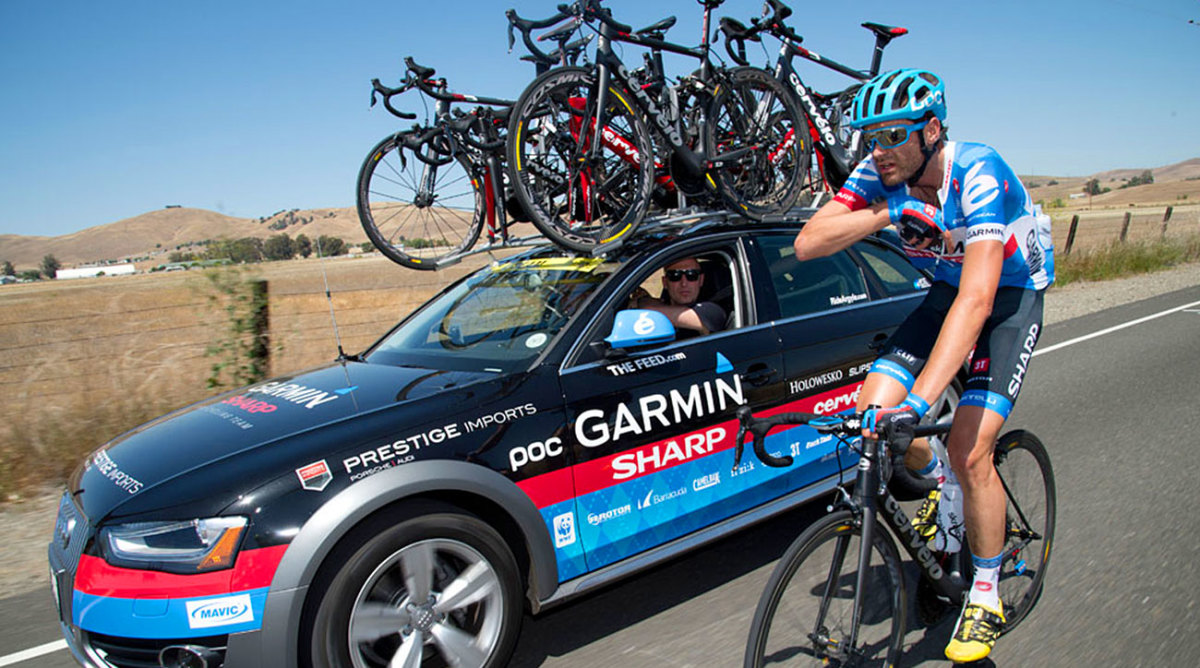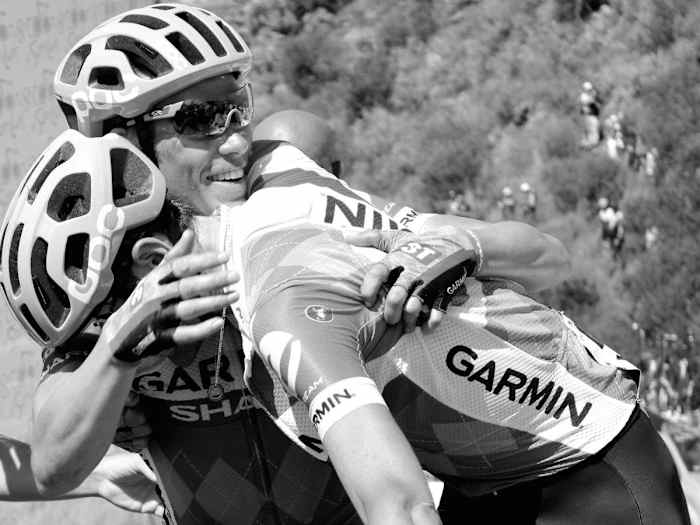Phil Gaimon Opens Up About Living (and Giving Up) His Pro Cycling Dream in New Book "Draft Animals"
Phil Gaimon might be best known for his love of cookies. If you’ve been to a major cycling race in North America over the last six months, you may have seen him sprinting alongside the pros, bare-chested and wearing a blue Cookie Monster Hat while handing out cookies to the riders. He’s also the reigning U.S. hill climbing champion, and has been trolling amateur riders on the social cycling app Strava over the last year, setting record times on roads around the U.S.
But before all of that, Gaimon was a pro cyclist who climbed all the way up to the WorldTour. His latest book, Draft Animals, released on Oct. 10, is the follow-up to Pro Cycling on $10 a Day, and tells the story of the couple of years—2014 and ‘16—that he spent living his longtime dream.
Former Pro Cyclist Phil Gaimon Has a New Goal: Finding the Best Cookies in America
Draft Animals is written with raw honesty. (Parents beware: the book is not PG-13 and has a fair amount of coarse humor.) Like many pro athletes, Gaimon exudes so much confidence that he at times comes across as self-absorbed. He documents his struggles and frustrations dealing with the hierarchy of pro cycling, touching on entitled riders and indifferent bosses, and this book may not win too many of those old colleagues over. But Gaimon also relishes in his memories of the highs. Not just his wins, but the joking around in the peloton during the grind of long stage races, the accomplishment of knowing you were part of a teammate’s success, and the lifelong friends he made in his time at the top.
In 2003, Gaimon, age 17, was inspired to start riding by the exploits of then-superhero Lance Armstrong. Back then, cycling was soaring, and Armstrong was the epitome of the Athletic Dream. He came back from fighting testicular cancer in the mid-90s to win the Tour de France a record seven times before retiring for good in 2011. The sense of betrayal after Armstrong was exposed as a super villain simmers throughout the book. (Armstrong admitted doping to Oprah Winfrey in January of 2013, subsequently had all of his Tour wins stripped, and was banned from pro cycling for life.)
Does Investing in Sports Science Actually Result in More Wins?
Sponsors disappeared and teams folded or merged in what Gaimon calls the “post-dopocalypse.” Gaimon’s chance of turning his passion into a career faded as WorldTour fields shrank. He raced against—and lost to—former dopers, never sure whether he was really in a fair fight or not. But while he frequently taunted those ex-dopers—in 2010, he had a tattoo of a bar of soap and the word CLEAN inked on the inside of his right bicep—Gaimon also found the world wasn’t a binary contrast between good and evil.
Tom Danielson, who helped Gaimon make the jump up from the continental circuit, and who would end up riding support for him in his first UCI race—Gaimon won the first stage and finished second overall at the 2014 Tour of San Luis—was suspended for six months in ‘12 for blood doping. Jonathan Vaughters, Gaimon’s boss at Garmin in ’14 and Cannondale in ’16, has admitted to doping during his time on Armstrong’s U.S. Postal Service team. And when Danielson tested positive for an anabolic steroid in 2015, Gaimon had to confront the dilemma of not just whether he could trust rehabilitated drug cheats, but whether he could trust one who had become a close friend. (Danielson was suspended for four years, but has claimed the failed test was due to a contaminated supplement.)
If you want to understand how hard succeeding on the pro tour really is, and the sacrifice that demands, this book is a great place to start. On Stage 6 of the Tour of Colorado inn August 2015, as his relationship with his then-fiancé fell apart, and with his dad losing the fight against cancer, Gaimon broke into tears, overwhelmed. He dropped out of the race and flew back home to Atlanta, unsure of whether a DNF (did not finish) would jeopardize his $70,000 contract offer with Cannondale for the following year. When his contract finally arrived, it had been trimmed down to $65,000.
“It’s true that my results in Utah and Colorado were less than we’d expected,” Gaimon writes, “[but] was this the ‘your dad is dying’ tax?”
More than anything else, Draft Animals makes you want to go jump on a bike right now. As a domestique rider and a hill-climbing specialist, Gaimon’s job on the WorldTour was to drag team leaders up mountains, allowing them to shelter in his slipstream while stretching and breaking the peloton with his pace. “Riding in easy to the finish,” he writes about Stage 4 of the Tour of Utah in 2014, which ended with a 3,000-foot climb up Powder Mountain, “I looked down the switchbacks and smiled at the destruction I’d caused.” Gaimon had launched Danielson to a stage win and the yellow jersey.
By the end of the book, you’re left cheering for an imperfect rider, wishing he had just one more real chance to succeed on the pro circuit. Spoiler alert: After struggling for a total of two years on the WorldTour, Gaimon was left without a contract last fall and decided to retire from pro cycling rather than fight his way back up. He’d realized that while he was good enough to deserve a shot at the WorldTour, he wasn’t destined for cycling greatness. “It was time to get out of the way,” he writes. “Let someone else live the dream.”
He labors to sign off on a positive note. Gaimon never achieved most of his goals. But in the struggle he learned balance. Sometimes you need to stop worrying about shaving an extra ounce of body fat just to bump your power-to-weight ratio by a tiny fraction. Sometimes you need to just stop and eat the cookies







